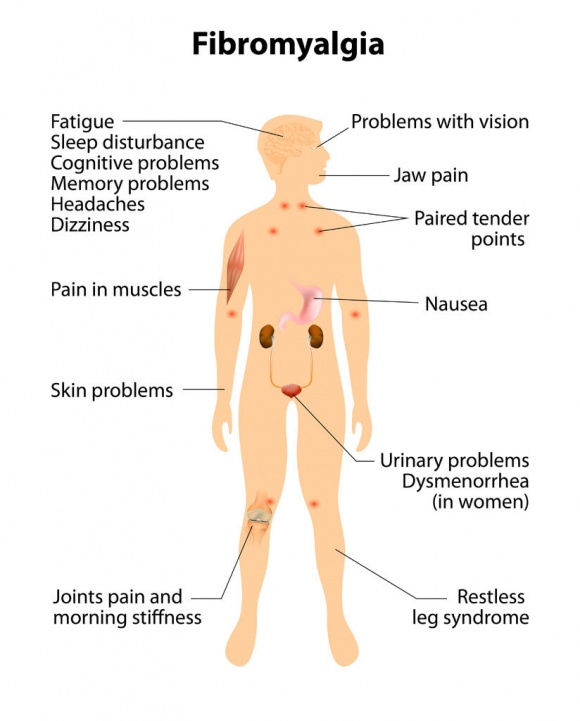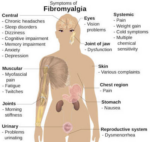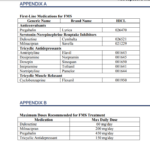What is Inflammatory Arthritis ?
Inflammatory arthritis is a term used to describe a group of chronic, autoimmune disorders characterized by inflammation in the joints. Unlike osteoarthritis, which is primarily caused by wear and tear on the joints, inflammatory arthritis is the result of an overactive immune system attacking healthy joint tissues. This leads to persistent joint pain, swelling, stiffness, and potential joint damage over time. Some common types of inflammatory arthritis include:
- Rheumatoid Arthritis (RA): Rheumatoid arthritis is one of the most well-known forms of inflammatory arthritis. It primarily affects the synovium, which is the lining of the membranes that surround the joints. This leads to joint inflammation, pain, and, if left untreated, joint deformities. RA can also affect other parts of the body, such as the heart, lungs, and blood vessels.
- Ankylosing Spondylitis: Ankylosing spondylitis primarily affects the spine and sacroiliac joints in the lower back. Over time, it can cause the vertebrae to fuse together, resulting in a rigid spine.
- Psoriatic Arthritis: Psoriatic arthritis is associated with the skin condition psoriasis. It can affect any joint and may also cause inflammation in other parts of the body.
- Systemic Lupus Erythematosus (SLE): Lupus is an autoimmune disease that can affect various systems in the body, including the joints. Joint pain and inflammation are common symptoms of lupus.
- Juvenile Idiopathic Arthritis (JIA): This is a type of inflammatory arthritis that affects children. It can present with various symptoms, including joint pain, swelling, and stiffness.
- Spondyloarthritis: This is a group of related conditions that affect the spine and large joints. Conditions like ankylosing spondylitis and psoriatic arthritis fall under this category.
- Gout: Gout is a type of inflammatory arthritis caused by the buildup of uric acid crystals in the joints, leading to sudden and severe attacks of joint pain, usually in the big toe.
- Lupus: Systemic lupus erythematosus (SLE) is an autoimmune condition that can affect multiple body systems, including the joints. Joint pain and inflammation are common features of lupus.
The exact cause of inflammatory arthritis is not fully understood, but it is believed to involve a combination of genetic, environmental, and immunological factors. Early diagnosis and appropriate management are essential for people with inflammatory arthritis to help reduce pain, prevent joint damage, and improve overall quality of life.
Treatment for inflammatory arthritis may include medications to reduce inflammation and manage pain, physical therapy, lifestyle modifications, and in some cases, surgery to repair damaged joints. Treatment plans are tailored to the specific type of inflammatory arthritis and the individual’s needs. Patients with inflammatory arthritis often work closely with rheumatologists, who are specialists in diagnosing and treating these conditions.
What is Fibromyalgia ?
Fibromyalgia is a complex and chronic medical condition characterized by widespread musculoskeletal pain, often accompanied by other symptoms such as fatigue, sleep disturbances, mood disorders, and cognitive difficulties. It is considered a neurological disorder, and its exact cause is not well understood. Fibromyalgia primarily affects the musculoskeletal system, leading to widespread pain and tenderness in various parts of the body, but it can also impact other systems in the body.
Key characteristics and aspects of fibromyalgia include:
- Widespread Pain: The hallmark symptom of fibromyalgia is chronic, widespread pain. This pain is typically described as a dull, aching sensation and is often present on both sides of the body and above and below the waist.
- Tender Points: In fibromyalgia, there are specific tender points on the body, typically at 18 specific locations, which are especially sensitive to pressure. These tender points are often used in diagnosis, but it’s important to note that fibromyalgia is not solely defined by the presence of these points.
- Fatigue: Many individuals with fibromyalgia experience profound fatigue, which can be both physical and mental in nature. Sleep disturbances, such as non-restorative sleep and insomnia, contribute to the fatigue.
- Cognitive Symptoms: Commonly referred to as “fibro fog,” people with fibromyalgia may experience cognitive difficulties, including memory problems, difficulty concentrating, and confusion.
- Other Symptoms: Fibromyalgia is often associated with a range of other symptoms, including headaches, irritable bowel syndrome, depression, anxiety, and heightened sensitivity to sensory stimuli (e.g., light, noise, temperature).
- Diagnosis: Diagnosing fibromyalgia can be challenging, as there are no specific laboratory tests or imaging studies that can definitively confirm the condition. It is typically diagnosed based on clinical criteria, including a history of widespread pain and the presence of tender points. Medical professionals may also rule out other conditions that can mimic the symptoms of fibromyalgia.
- Management: Management of fibromyalgia focuses on symptom relief and improving the patient’s quality of life. Treatment often involves a combination of medication, physical therapy, exercise, stress management, and lifestyle adjustments. Medications like pain relievers, antidepressants, and anticonvulsants may be used to manage pain and other symptoms.
It’s important to note that fibromyalgia is a chronic condition, and there is no cure. However, many people with fibromyalgia can experience significant symptom improvement with the right combination of treatments and lifestyle adjustments. Treatment plans should be individualized to address each patient’s specific needs and symptoms.
If you suspect you may have fibromyalgia or are experiencing symptoms similar to those described, it’s crucial to seek medical evaluation and diagnosis from a healthcare professional, typically a rheumatologist or a primary care physician experienced in managing fibromyalgia.
What Are the Differences Between Fibromyalgia and Inflammatory Arthritis ?
Fibromyalgia and inflammatory arthritis are distinct medical conditions with different causes, symptoms, and management approaches. Here are some key differences between these two conditions:
- Cause:
- Fibromyalgia: The exact cause of fibromyalgia is not well understood, but it is generally considered a neurological disorder. It is believed to result from an abnormal pain processing system in the central nervous system. There is no inflammation or joint damage associated with fibromyalgia.
- Inflammatory Arthritis: Inflammatory arthritis is characterized by an overactive immune response that causes inflammation in the joints. This inflammation is usually due to an autoimmune reaction where the immune system mistakenly attacks healthy joint tissues. The specific cause can vary depending on the type of inflammatory arthritis (e.g., rheumatoid arthritis, ankylosing spondylitis, psoriatic arthritis).
- Pain and Inflammation:
- Fibromyalgia: Widespread, chronic pain is the primary symptom of fibromyalgia, but there is no evidence of inflammation in the joints or other tissues. Instead, it is characterized by heightened pain sensitivity and abnormal pain perception.
- Inflammatory Arthritis: Inflammatory arthritis is marked by joint inflammation, leading to symptoms such as joint pain, swelling, and stiffness. The inflammation can cause joint damage and deformities over time.
- Tender Points:
- Fibromyalgia: Tender points are specific areas on the body that are highly sensitive to pressure. These tender points are often used in diagnosing fibromyalgia, but they are not a feature of inflammatory arthritis.
- Inflammatory Arthritis: There are no specific tender points used for diagnosis in inflammatory arthritis.
- Other Symptoms:
- Fibromyalgia: While pain is the primary symptom, fibromyalgia is often accompanied by fatigue, sleep disturbances, cognitive issues (fibro fog), and mood disorders like depression and anxiety.
- Inflammatory Arthritis: In addition to joint-related symptoms, inflammatory arthritis may also affect other systems in the body, and symptoms can vary depending on the specific type of arthritis. For example, psoriatic arthritis is associated with the skin condition psoriasis, and ankylosing spondylitis primarily affects the spine and sacroiliac joints.
- Diagnosis:
- Fibromyalgia: Diagnosis is typically based on clinical criteria, including a history of widespread pain, the presence of tender points, and the exclusion of other conditions that could mimic fibromyalgia symptoms.
- Inflammatory Arthritis: Diagnosis is often made based on a combination of clinical evaluation, blood tests, imaging studies, and specific diagnostic criteria for the type of arthritis.
- Treatment:
- Fibromyalgia: Management focuses on symptom relief and improving quality of life. Treatment often includes a combination of medication, physical therapy, exercise, stress management, and lifestyle adjustments.
- Inflammatory Arthritis: Treatment aims to reduce inflammation, manage pain, and slow down the progression of the disease. Medications, such as disease-modifying antirheumatic drugs (DMARDs) and biologics, are commonly used to manage inflammatory arthritis. Physical therapy and lifestyle modifications are also essential.
It’s important to differentiate between these conditions as their management approaches are distinct. If you suspect you have either condition, it is crucial to seek a proper diagnosis and guidance from a healthcare professional, such as a rheumatologist, who specializes in diagnosing and treating these conditions.
Certain forms of inflammatory arthritis and fibromyalgia can be challenging to differentiate in their early stages because they share similar symptoms.
While fibromyalgia is categorized as a condition related to arthritis, it is not a typical form of arthritis because it lacks the characteristic tissue inflammation and does not result in joint or muscle damage. Nonetheless, some categorize it as a rheumatic condition due to its ability to cause pain and tenderness in the joints and surrounding tissues. Typically, individuals with fibromyalgia exhibit normal X-ray and blood test results, which can be frustrating as family and friends may mistakenly assume they are in good health. In contrast, individuals with arthritis often display abnormal test results and may exhibit visible signs of pain, such as swollen or deformed joints.
It is vital to distinguish between these two conditions for an accurate diagnosis, as this differentiation is crucial to ensure the appropriate course of treatment. Both conditions are characterized by persistent, long-lasting pain.
Typical Signs of Rheumatoid Arthritis/Osteoarthritis Osteoarthritis
• Pain in affected joints, particularly after repetitive use.
• Stiffness, you may feel creaky first thing in the morning.
• Creaking joint noises, cracking and crunching sounds.
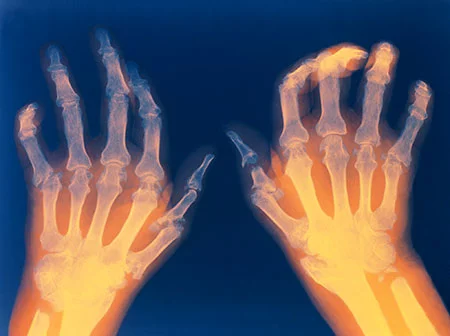
Rheumatoid Arthritis
• Reduced appetite.
• Feeling generally unwell.
• Fatigue.
• Swollen glands.
• General feeling of weakness.
Common Shared Symptoms of Fibromyalgia and Inflammatory Arthritis
Inflammatory arthritis and fibromyalgia are two distinct conditions, but they can share certain symptoms, which can sometimes make it challenging to differentiate between them, especially in the early stages. Common shared symptoms include:
- Pain: Both conditions are associated with chronic pain. This pain can be widespread and affect multiple areas of the body. The pain is often described as aching, tender, and persistent.
- Fatigue: Individuals with both inflammatory arthritis and fibromyalgia frequently experience significant fatigue, which can be both physical and mental in nature. This fatigue can be debilitating and impact daily functioning.
- Sleep Disturbances: Sleep problems, such as insomnia, non-restorative sleep, and frequent awakenings, are common in both conditions. Poor sleep quality can exacerbate pain and fatigue.
- Cognitive Issues: People with inflammatory arthritis and fibromyalgia may experience cognitive difficulties, often referred to as “brain fog” or “fibro fog.” These can include problems with memory, concentration, and mental clarity.
- Stiffness: Morning stiffness is a shared symptom, with joints and muscles feeling stiff and difficult to move, particularly upon waking or after periods of inactivity.
- Mood Disorders: Both conditions can be associated with mood disorders, such as depression and anxiety. Chronic pain and fatigue can contribute to emotional distress.
It’s important to note that while these symptoms can be similar, the underlying causes are different. Inflammatory arthritis involves joint inflammation and is often characterized by swollen, tender, or deformed joints. Fibromyalgia, on the other hand, is primarily characterized by widespread pain, heightened pain sensitivity, and the presence of tender points, without joint inflammation or damage.
Typical Signs of Fibromyalgia
Fibromyalgia is a complex and often misunderstood condition with a wide range of symptoms. Typical signs and symptoms of fibromyalgia include:
- Widespread Pain: Chronic, widespread pain is the primary symptom of fibromyalgia. This pain is often described as a constant, dull ache that affects both sides of the body and is present above and below the waist. It can be experienced in various areas, such as the neck, shoulders, back, chest, hips, and limbs.
- Tender Points: Fibromyalgia is associated with specific tender points on the body. There are 18 designated tender points, located at various places, including the back of the neck, shoulders, chest, elbows, hips, and knees. These points are highly sensitive to pressure, and their tenderness is a key diagnostic feature.
- Fatigue: Profound fatigue is common in fibromyalgia. Even after a full night’s sleep, individuals with fibromyalgia often wake up feeling tired and unrefreshed. This fatigue can be both physical and mental.
- Sleep Disturbances: Sleep problems are a hallmark of fibromyalgia. People with fibromyalgia often experience difficulties falling asleep, staying asleep, and achieving restorative sleep. Sleep disturbances can exacerbate pain and fatigue.
- Cognitive Issues: Often referred to as “fibro fog,” cognitive problems are common. These can include difficulties with memory, concentration, and mental clarity. Many individuals with fibromyalgia report feeling forgetful or mentally “foggy.”
- Headaches and Migraine : Frequent headaches, including tension-type and migraine headaches, are often associated with fibromyalgia. up to 50 percent of cases
- Flu like pain : primarily in the neck and shoulders.
- Irritable Bowel Syndrome (IBS): Gastrointestinal symptoms, such as abdominal pain, bloating, and altered bowel habits, are sometimes seen in individuals with fibromyalgia.
- Sensitivity to Sensory Stimuli: People with fibromyalgia can be hypersensitive to sensory stimuli, including light, noise, temperature, and touch.
- Depression and Anxiety: Mood disorders, such as depression and anxiety, are common in individuals with fibromyalgia. Chronic pain and fatigue can contribute to emotional distress.
- Depression/anger: Feeling anxious
- Bouts of constipation or diarrhea.
- Jaw or facial tenderness : 90 percent experience this symptom
It’s important to note that fibromyalgia is a chronic condition, and its exact cause is not well understood. Diagnosis is typically made based on clinical criteria, including a history of widespread pain and the presence of tender points. There is no specific laboratory test or imaging study that can definitively confirm the condition. Management of fibromyalgia typically involves a multidisciplinary approach, including medications, physical therapy, exercise, stress management, and lifestyle adjustments, to help improve symptoms and overall quality of life.
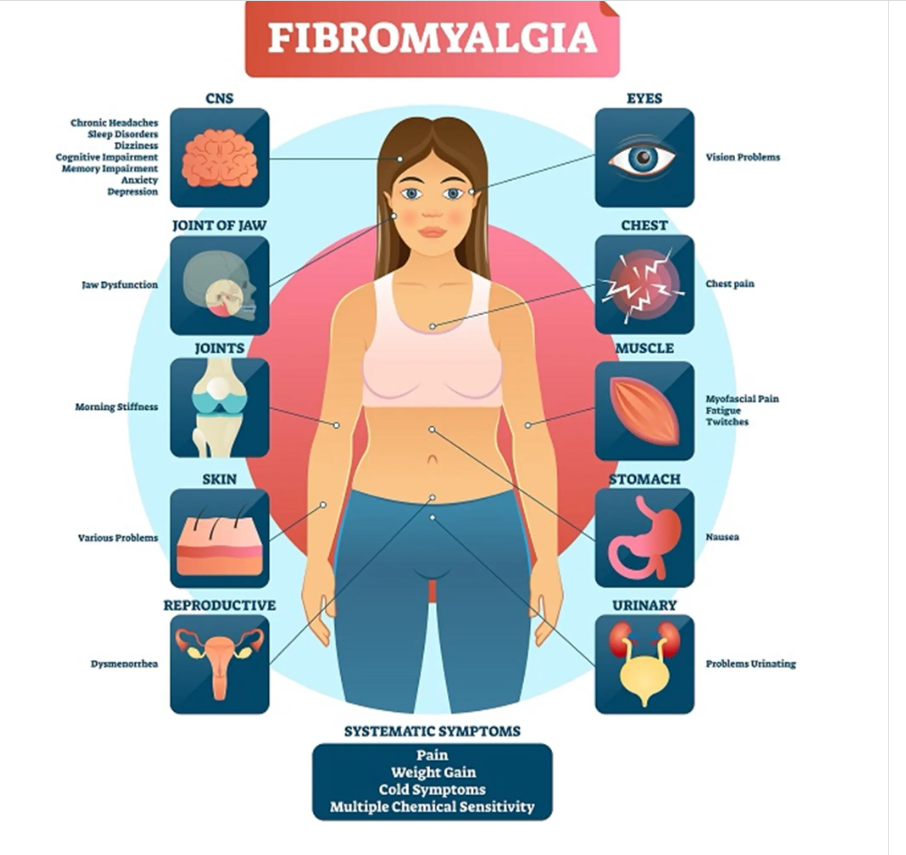
Diagnosing Symptoms of Fibromyalgia and Inflammatory Arthritis
Diagnosing fibromyalgia and inflammatory arthritis typically involves a combination of clinical evaluation, medical history, physical examination, and, in some cases, specific laboratory tests or imaging studies. Here’s how each condition is diagnosed:
Diagnosing Fibromyalgia:
- Clinical Evaluation: The diagnosis of fibromyalgia often starts with a comprehensive clinical assessment by a healthcare provider, typically a rheumatologist or a specialist in chronic pain conditions.
- Medical History: The healthcare provider will take a detailed medical history, including a discussion of your symptoms, their duration, and their impact on your daily life.
- Tender Points Examination: To meet the diagnostic criteria for fibromyalgia, the healthcare provider may assess for the presence of tender points. There are 18 specific tender points on the body, and to be diagnosed with fibromyalgia, a person typically needs to have tenderness at many of these points. It’s worth noting that tender points are not always used in the diagnosis, and their presence can vary.
- Exclusion of Other Conditions: The healthcare provider will rule out other conditions that could mimic the symptoms of fibromyalgia, such as autoimmune diseases or inflammatory arthritis. Blood tests, imaging studies, and other diagnostic tests may be performed to exclude other potential causes of symptoms.
- Symptom Duration: A key criterion for the diagnosis of fibromyalgia is the presence of widespread pain for at least three months. This pain should be present in multiple areas of the body, above and below the waist, and on both sides of the body.
Diagnosing Inflammatory Arthritis:
- Clinical Evaluation: The diagnosis of inflammatory arthritis also begins with a thorough clinical evaluation, typically by a rheumatologist, who is a specialist in the field.
- Medical History: A detailed medical history will be taken, including a discussion of your symptoms, their onset, and their progression over time.
- Physical Examination: The healthcare provider will conduct a physical examination to assess for signs of joint inflammation, such as swelling, warmth, redness, and tenderness.
- Blood Tests: Specific blood tests are often performed to look for markers of inflammation, such as C-reactive protein (CRP) and erythrocyte sedimentation rate (ESR). Additionally, autoimmune antibodies, like rheumatoid factor and anti-citrullinated protein antibodies, may be tested for in cases of suspected rheumatoid arthritis.
- Imaging Studies: X-rays, ultrasounds, or magnetic resonance imaging (MRI) may be used to visualize the joints and assess for joint damage and inflammation.
- Diagnostic Criteria: The healthcare provider may use specific diagnostic criteria for the type of inflammatory arthritis being considered. For example, the American College of Rheumatology has established criteria for diagnosing rheumatoid arthritis.
It’s important to note that the diagnostic process may vary for each individual, and not all cases follow the exact same steps. The expertise of a rheumatologist or a specialist in these conditions is crucial for an accurate diagnosis, as both fibromyalgia and inflammatory arthritis can present with overlapping symptoms but require different treatment approaches. The process often involves eliminating other possible causes of symptoms and, in some cases, monitoring the progression of symptoms over time to confirm the diagnosis.
Pain Medications, Pain Relief, and Pain Management
